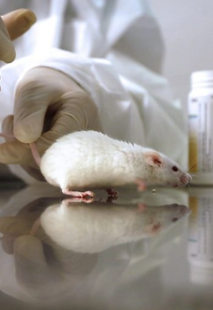Breaking the Rodent Glass Ceiling #533
August 31, 2019

When a new science finding is published about animal research, you might assume that scientists are trying to find out things that are useful for human health. They are, but it might not be so useful to all humans. Why? Because most biomedical research studies done in mice and rats are done only in male animals. Females were seen as too variable. The surging hormones, the emotions! The rodent show cravings, amirite? Well, not anymore. We're talking to Rebecca Shansky about why people should study males and females in research, and maybe stop worrying so much about mousey PMS.
Related links:
- Sexually divergent expression of active and passive conditioned fear responses in rats on eLife
- Sex-Specific Neuroanatomical Correlates of Fear Expression in Prefrontal-Amygdala Circuits on Biological Phsychiatry: A Journal of Psychiatric Neuroscience and Therapeutics
- Are hormones a "female problem" for animal research? on ScienceMag.org
- Fighting the Gender Stereotypes That Warp Biomedical Research on The New York Times
Guests:
- Rebecca Shansky
Guest Bios
Rebecca Shansky
Rebecca Shansky's research focuses on the neural connections between the medial prefrontal cortex (mPFC) and the amygdala, and sex differences in how this circuit processes fear and responds to stress. The mPFC and amygdala are frequently reported to be sites of dysfunction in stress-related mental illnesses like Major Depressive Disorder (MDD) and Post-Traumatic Stress Disorder (PTSD), the symptoms of which may be a result of abnormal cross-talk between the two regions. Since women are twice as likely as men to develop these disorders, relevant research in female animals is particularly important. Shansky's lab combines classic neuroanatomy techniques with state-of-the-art confocal microscopy to reconstruct neurons in 3D. By correlating structural information with behavioral measures, they can identify potential markers of vulnerability and resilience. In addition, they use behavioral pharmacology and immunofluorescence to probe interactions between ovarian hormones and neurotransmitter systems. Specifically, they are interested in estrogen's ability to modulate dopamine actions in the mPFC, and how this can affect memory for a traumatic event.








